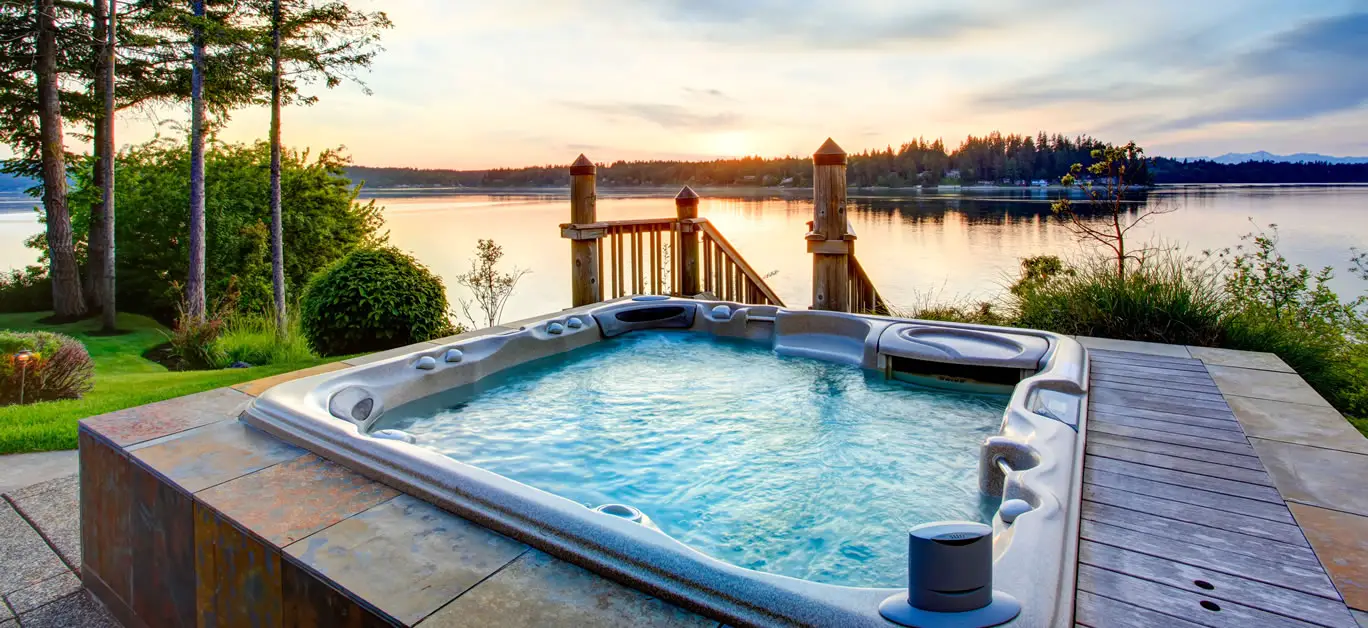Table of Contents - Understanding Hot Tub Power Consumption
This blog post may contain affiliate links. As an Amazon Associate I earn from qualifying purchases.
Understanding Hot Tub Power Consumption
When I was buying my first hot tub, I thought a lot about the upfront cost, but the cost of running the hot tub barely occurred to me. But over time, the power consumption and electricity cost of your hot tub are actually going to be much more significant than the initial cost of the hot tub.
In this comprehensive guide, I’m going to explore the different factors you need to consider when thinking about the power consumption of your hot tub. I’ll cover the cost of running a hot tub, as well as valuable tips for maximizing energy efficiency.
So, let’s dive in and explore everything you need to know to understand hot tub power consumption.
Understanding Hot Tub Electricity Usage
With the exception of wood-fired hot tubs, most hot tubs rely on electricity to both heat and circulate the water inside them. The amount of electricity required to do this will vary depending on the efficiency of the hot tub and the size. Let’s take a look at the different factors that can influence hot tub power efficiency…
1. Hot Tub Size
Obviously, the more water your hot tub holds, the more electricity it will take to heat and circulate that water. If you are buying a large hot tub, you will end up using more electricity. Consider how many people will be using the hot tub and factor that into your decision when making a purchase. For example, if it is usually just going to be 1-2 people in the hot tub, then buying a 6-person hot tub will just lead to a lot of wasted electricity to heat and circulate a larger amount of water than is necessary.
2. Insulation
The better insulated your hot tub is, the more efficient it will be. This is because the insulation helps prevent heat loss, so it takes less electricity to maintain a consistent temperature in the tub. More modern hot tubs tend to be much better insulated than older hot tubs.When shopping for a hot tub, you should look for models that mention that they are insulated.
3. Equipment Efficiency
Efficiency refers to how much power is wasted in order to complete a task. Inefficient hot tubs will waste a large amount of the electricity they use. Insulation can help with efficiency, but so can more modern circuitry and low-energy heat pumps, which are better optimized. Older hot tubs may have less efficient equipment, leading to higher energy consumption.
4. User Habits
How and when you use your hot tub will have a large impact on how much electricity it uses. Obviously, on a basic level, the more you use it, the more electricity it will use, but that’s not the only impact you can have. Just like a washing machine, reducing the temperature by even a few degrees can have a big impact on energy bills in the long run. Using a cover will also help to retain more heat when the hot tub is not in use and thus it will take less energy to bring it back up to the required heat the next time you use it.
The Cost Of Running A Hot Tub
Now you have a better understanding of hot tub efficiency, let’s look at some of the factors that can affect the total cost of running your hot tub.
It’s important to note that the actual cost of running a hot tub can vary depending on factors such as electricity rates, local climate, and individual usage patterns.
To estimate the monthly cost of running your hot tub, you can calculate the total kilowatt-hour consumption based on the heater and pump wattage. Multiply this figure by the cost per kilowatt-hour from your electricity bill to get an approximate monthly cost. Alternatively, if you have a smart energy meter, you can check the difference between your hourly rate when the hot tub is switched on vs when it is switched off.
- Electricity Rates
The cost of your electricity per kilowatt-hour (kWh) in your area will be the most important factor determining how much it costs to run your hot tub. This can vary wildly depending on where you live, so you should check with your utility provider to determine the exact cost per kWh you pay.
- Heating System Power Consumption
While other elements of your hot tub such as lights can use some electricity, the bulk of the power used will go to the heating system. The higher the wattage of your hot tub, the more electricity it will use. Hot tubs generally range from 1500 to 6000 watts, depending on their size and efficiency. A 6000w hot tub will use four times as much energy at full power than a 1500w one would.
- Circulation Pump Power Consumption
Second to the heater, the circulation pump is the biggest consumer of electricity in your hot tub. The pump ensures powers the jets and ensures proper water circulation, maintaining water quality and an even temperature throughout the hot tub.
Maximizing Your Hot Tub’s Energy Efficiency
There are some things you can do to maximize the energy efficiency of your hot tub even if your hot tub isn’t a modern, energy efficient model. By implementing these energy-saving tips, you can enjoy the benefits of your hot tub while keeping your electricity bill low.
1. Proper Insulation
The better insulated your hot tub can be, the more efficient it will be. Consider investing in a high-quality insulated cover with to retain heat when the hot tub is not in use. You should also inspect the hot tub’s insulation and address any areas that might require additional insulation.
2. Regular Maintenance
Maintenance helps keep your hot tub more efficient. For example, your water pump will have to work harder to pump water around the tub if your filters are blocked. Clean the filters regularly to maintain proper water circulation and prevent strain on the pump. Have a professional check and service your hot tub at least once per year.
3. Adjust Water Temperature
Consider lowering the temperature when the hot tub is not in use. Even lowering the temperature by a few degrees can make a big difference in energy consumption over the long term.
4. Efficient Timers And Controls
If your hot tub has a timer with programmable controls, this can significantly reduce the amount of energy used. These timers allow you to schedule heating and circulation cycles, ensuring the hot tub is only active and heated when you need it to be and minimizing its power use when it is idle.
Stay Efficient and Save Money
Hopefully this article has given you a better understanding of the factors that influence a hot tub’s power usage, shown you which power saving features to look out for when buying a hot tub, and given you some tips to maximize the efficiency of your hot tub.
By making informed decision, you can enjoy a relaxing hot tub soak while minimizing the impact on your wallet and the environment.



